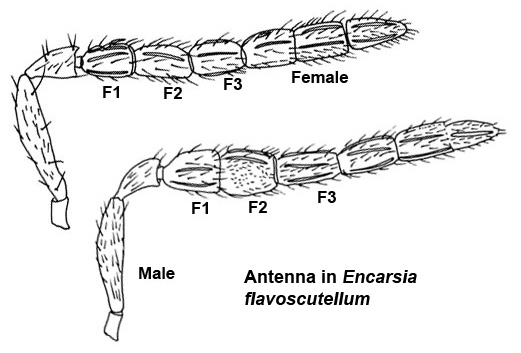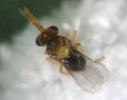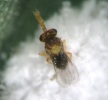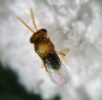 |
Scientific nameEncarsia flavoscutellum Zehntner
Taxonomic positionHymenoptera: Chalcidoidea: Aphelinidae
DiagnosisFemale: Head pale brown, occiput and frons darker brown; thorax and gaster brown except posterior mid-lobe, scutellum, legs and intersegmental bands of gaster pale yellow; wings slightly infuscated below marginal vein. Antennal formula 1, 1, 3, 3.
Male: Similar to females, but have 7-segmented antennae with F5 completely fused with F6 and F2 is expanded or swollen, contrasting strikingly in size and width with F3.  Evans et al. (1995) provided a detailed description E. flavoscutellum and designated a neotype as the original type was lost. ImagesDistributionIndonesia (Java). Encarsia flavoscutellum occurs in the northeastern region of India
(Assam; Nagaland) (Tripathi, 1995). Recently, efforts have been made to colonise it in the peninsular states. It is reported to have established in the released sites in Karnataka and Tamil Nadu.
HostsEncarsia species belonging to the flavoscutellum group are parasitic on Hormaphidinae (Aphididae). E. flavoscutellum is parasitic on the sugarcane woolly aphid,
Ceratovacuna lanigera Zehntner and Astegopteryx nipae (van der goot).
References
|









